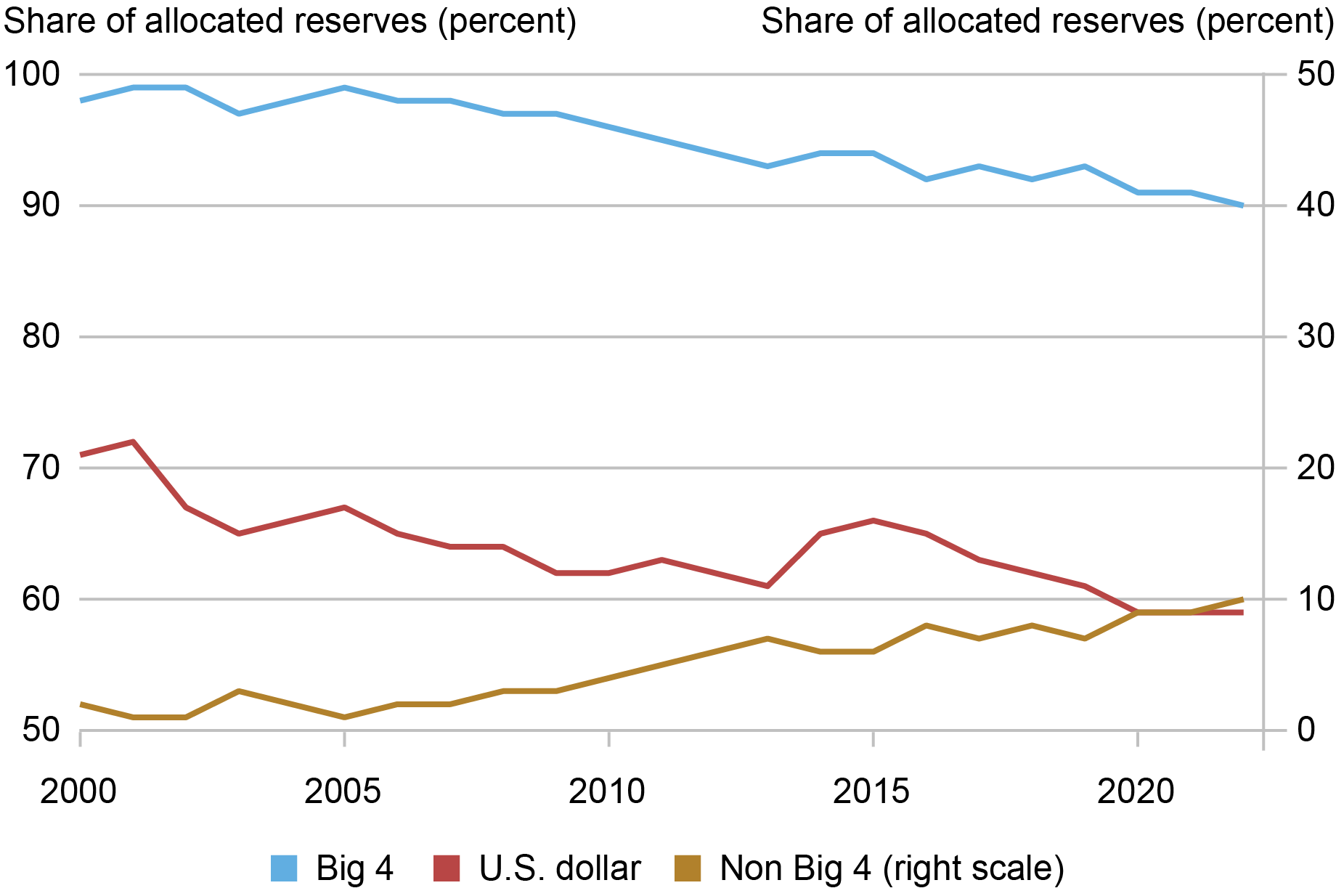Recent research from the New York Federal Reserve challenges the popular narrative about the dollar’s decline and the rise of gold. As of January, global central banks and finance ministries held nearly $12 trillion in foreign exchange reserves, with almost $7 trillion in U.S. dollar assets.
Also Read: India and China Eliminate US Dollar in Imports
Some market participants have linked the increase in official gold demand to a desire to move away from the U.S. dollar. However, the research argues that these trends are largely due to the behavior of a small number of countries, namely the BRICS, not a widespread effort to diversify away from the dollar.
In today's post, the authors note that the narratives about declining dollar shares in official reserves, and increasing roles for gold holdings by central banks, inappropriately generalize the actions of a small group of countries.https://t.co/Rpwa0hnX6X
— New York Fed (@NewYorkFed) May 29, 2024
Country-Level Changes Are Driving Dollar Share Decline
The New York Fed’s research shows that two main factors drive changes in the dollar share of aggregate reserves. First, changes in preferences for holding dollar assets can evolve at the country level and interact with the country’s initial reserve balance. Second, global aggregates can change due to variations in the quantities of reserves held by different countries, influenced by their initial dollar portfolio allocation.
Countries with big changes in their reserve sizes and initial dollar weights different from the average can heavily impact global aggregates of foreign exchange currency shares. Two types of country-level data provide insights into these factors. Country foreign exchange reserves data from the IMF and country-level composition of reserves from researcher estimates.

These estimates show the 7 percentage point decline in the U.S. dollar global reserve share observed between 2015 and 2021. The decline in the dollar share is explained in three parts. First, the weighted sum of the preferences for dollar assets across countries accounts for 0.3 percentage points.
Also Read: Russia, China Stopped Using US Dollar Permanently
Second, the pattern of accumulation and declines in reserve portfolios explains 3.8 percentage points of the aggregate U.S. dollar share decline. The third part of the decomposition estimates the portion of the decline attributed to changing preferences for dollar assets by countries without available portfolio allocation estimates.
Small Group of Countries Are Dumping Dollar, Not the Whole World
Data on estimated portfolio shares show a mix of positive and negative changes in U.S. dollar asset portfolio shares across countries. Countries are not moving away from dollars en masse. In fact, thirty-one of the fifty-five countries with estimates had increasing U.S. dollar shares from 2015 to 2021.
The decline in dollar preferences of a small group of countries (notably China, India, Russia, and Turkey) and the large increase in reserves held by Switzerland explain most of the decline in the aggregate dollar share of reserves.

Regression analytics explored the contributions of standard determinants of the U.S. dollar share of country reserves. These determinants include currency pegs, country bilateral trade shares with the U.S., euro area, and Japan, and the currency denomination and level of external debt. The research finds that the main drivers of portfolio allocations are traditional factors like currency pegs, proximity to the euro area in trade, and debt exposures.
Central banks have increased their gold purchases significantly since the global financial crisis. According to the World Gold Council, global central banks bought over 1,100 tons of gold in 2022, more than double the previous year’s purchases, and maintained similar levels in 2023. Market participants attribute this increased demand to three factors: gold’s perceived value as an inflation hedge, its use as a risk hedge, and its use as a sanctions hedge.
Cryptopolitan reporting by Jai Hamid





